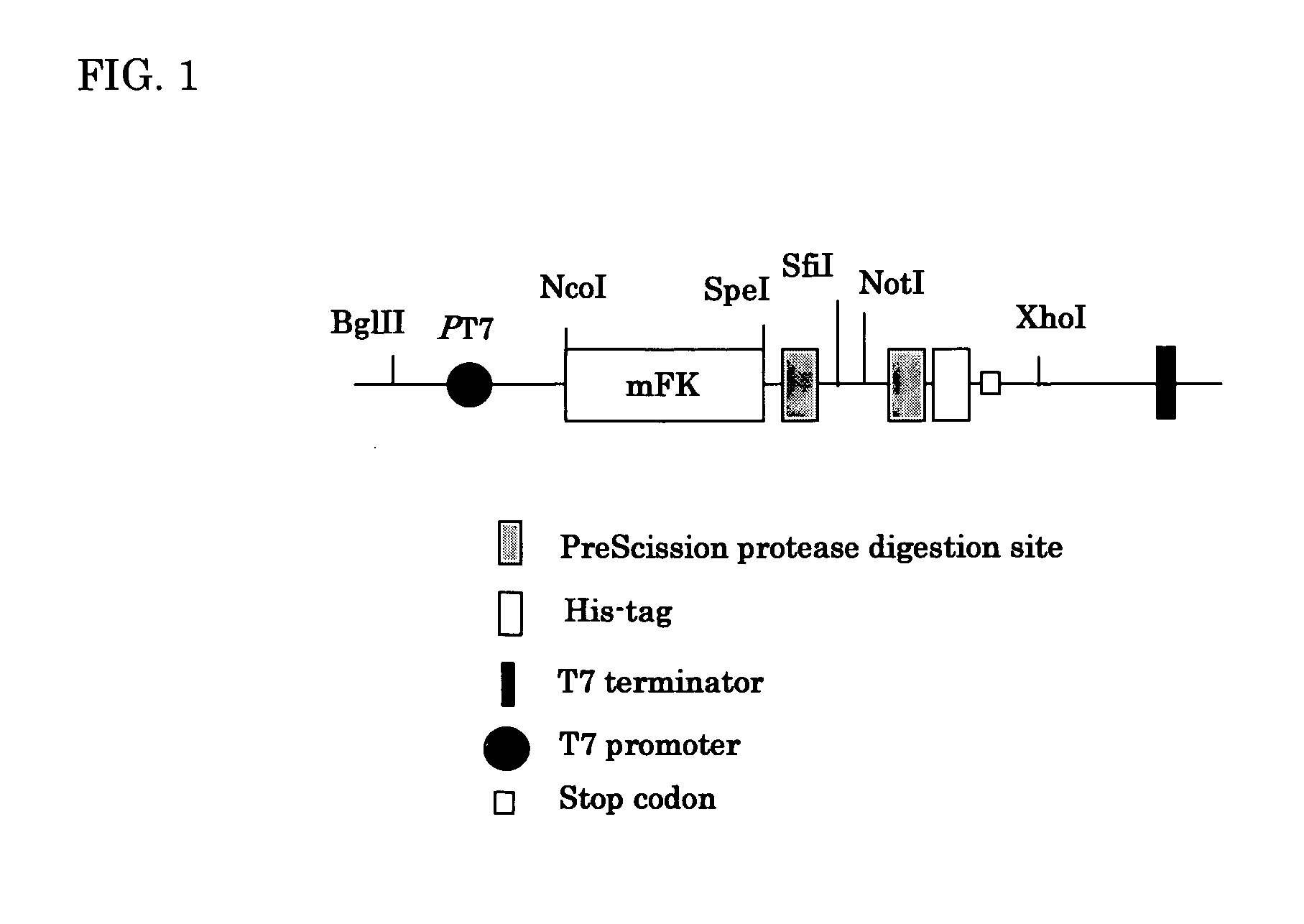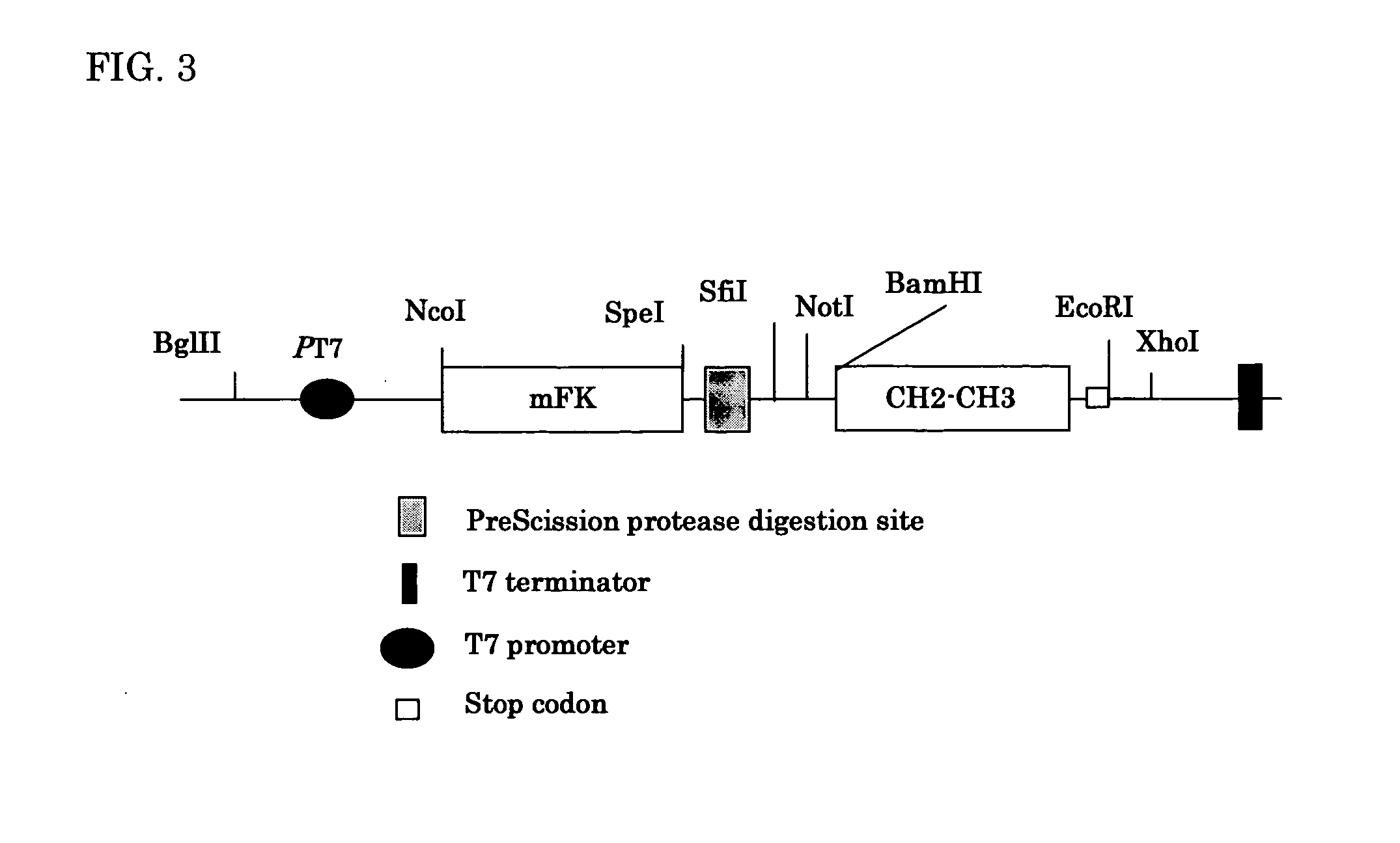Methods for producing recombinant polyclonal immunoglobulins
- Summary
- Abstract
- Description
- Claims
- Application Information
AI Technical Summary
Benefits of technology
Problems solved by technology
Method used
Image
Examples
example 1
Preparation of Mouse Antibody Genes and Construction of Expression Vectors.
1. Preparation of Mouse Single-Chain-Fv (scFv) Genes (I).
[0094] The mRNAs were extracted from spleens of MPO (Myeloperoxidase)-knockout mice (Y. Aratani et al. Infection and Immunity 67: 1828-36, 1999) with a RNA Extraction Kit (Amersham Biosciences Co.) and a mRNA Purification Kit (Amersham Bioscioces Co.). The cDNAs were synthesized using an oligo-dT primer with a First-Strand cDNA Synthesis Kit (Amersham Biosciences Co.). Mouse antibody VL genes were amplified by hot-start-PCR in the solutions (100 micro liters) containing 100 micro grams of the templates cDNAs, 100 pmole of the forward primers as shown by SEQ ID Nos. 1-18) and 100 pmole of the reverse primers as shown by SEQ ID Nos. 19-22 with thirty-cycles of the 4-steps; at 94° C. for 30 seconds, 63° C. for 30 seconds, 56° C. for 30 seconds, and 72° C. for 60 seconds using a TaKaRa Ex Taq Hot Start Version (Takara Bio Inc., Japan). Ten PCRs describe...
example 2
Production of Recombinant Polyclonal Single Chain Fv (scFv) Antibodies Using a PPIase Fusion System.
[0102] The amplified scFv genes from a MPO-knockout mouse obtained in Example 1 was digested with Sfi I-Not I and 200 ng of the digested scFv genes were introduced into the Sfi I-Not I site of pTmFKPI digested with Sfi I-Not I and treated with bacterial alkaline phosphates by T4 DNA ligase. E. coli JM109 (DE3) (Clontech Co.) (300 micro liters) was transformed with the ligase-reaction-mixture containing 500 ng DNA by electroporation (2.5 kv, 25 micro F, 200 Ω, 4.68 msec.). The SOC medium was added to the transformed cells and then incubated at 37° C. for 3 hours. The cell suspension (5 mL) was inoculated in 800 mL of 2×Y.T. medium containing carbenicillin (100 micro grams / mL) and culture was conducted at 35° C. for 24 hours at the rotation of 140 rpm. After the culture, cells were harvested by centrifugation and disrupted by sonication in 50 mL of PBS. The supernatant was obtained by...
example 3
Production of Recombinant Polyclonal scFv-CH1-CH2-CH3 Antibodies by a PPIase Fusion System.
[0105] The amplified scFv genes (200 ng) obtained in Example 1 was introduced into pTmFKPC123 (1 micro gram) shown in FIG. 2 by T4 DNA ligase. The JM109 (DE3) (300 micro liters) was transformed with the ligase-reaction-mixture containing 500 ng DNA by electroporation in the same condition as Example 2. After transformation, cells were suspended in 10 mL of SOC medium and incubated at 37° C. for 3 hours. The cell suspension (5 mL) was inoculated in 800 mL of 2×Y.T. medium and culture was conducted at the rotation of 140 rpm at 35° C. for 24 hours. After the culture, cells were harvested by centrifugation and disrupted by sonication in 50 mL of PBS. The supernatant was obtained by centrifugation.
[0106] The obtained supernatant was applied to a Protein A column (Amersham Biosciences Co.) and the column was washed with 50 mM Tris-HCl (pH 7.5) containing 1 mM EDTA. The synthetic polyclonal antib...
PUM
| Property | Measurement | Unit |
|---|---|---|
| Length | aaaaa | aaaaa |
Abstract
Description
Claims
Application Information
 Login to View More
Login to View More - R&D
- Intellectual Property
- Life Sciences
- Materials
- Tech Scout
- Unparalleled Data Quality
- Higher Quality Content
- 60% Fewer Hallucinations
Browse by: Latest US Patents, China's latest patents, Technical Efficacy Thesaurus, Application Domain, Technology Topic, Popular Technical Reports.
© 2025 PatSnap. All rights reserved.Legal|Privacy policy|Modern Slavery Act Transparency Statement|Sitemap|About US| Contact US: help@patsnap.com



